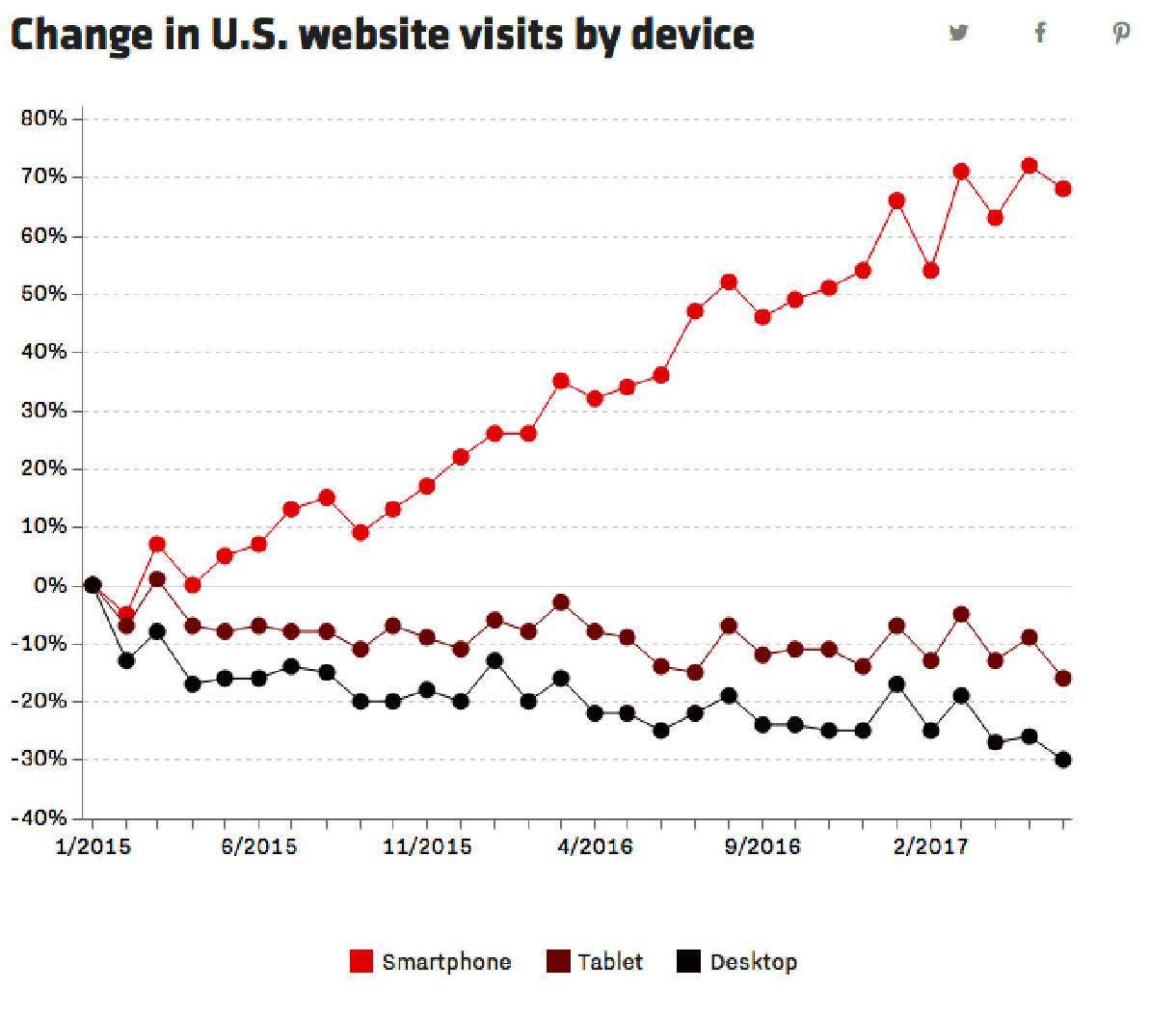

What "The Future of Smartphones" Means for Digital Marketers
When Apple announced the anticipated iPhone X last week at a special event in the new Steve Jobs Theater, Tim Cook branded it the “future of the smartphone.” An edge-to-edge screen, powerful camera technology, and facial recognition are just a few of the widely touted features of the phone.
Many tech enthusiasts are criticizing the iPhone X for its high price point and “late-to-the-game” features found in various Android phones years previously. But there’s no denying that even if they’re second to use the technology, Apple still sets the tone for the market's (and customers’) smartphone expectations.
So what does “the future of smartphones” mean for digital marketers? How does constantly-evolving hardware and software on smartphones affect how companies should approach online marketing? Let’s dive in.
Security is non-negotiable.
One of the most highly advertised features of the iPhone X is its facial recognition capabilities, dubbed FaceID. Made possible with a combination of software and hardware upgrades, FaceID allows iPhone owners to unlock their phone by only looking at it.

Source: CNET
This, combined with the outcry over the Equifax breach (frankly, the outcry hasn’t been strong enough, in our opinion!), means public awareness–and expectations–about online security is at an all-time high.
Investment and focus into high quality security is now table stakes. Websites should be secure (yes, it’s time to get an SSL certificate, no matter the hassle. The security benefits should far outweigh any concerns about SEO, which shouldn’t be a problem regardless). Any online transactions should both look secure and be secure. Steps should be taken to make sure all of your customers’ data is protected. Your website privacy policy should be clear and honest.
Companies that put time and effort into protecting the security of their customers can expect to pay dividends. Not only can you avoid business-crushing security breaches, but you can create additional brand trust from your customer base.
Mobile first and mobile fast.
There’s nothing new to the suggestion that websites should be built with mobile traffic in mind. Not only does mobile traffic account for more than half of all global website traffic (Open in new windows), mobile traffic has accounted for all website traffic growth (Open in new windows) in the U.S. since 2015.
It amazes us to see how many companies continue to build websites and do digital marketing that is clearly not mobile first. Companies still invest in creating beautiful, interactive content that has limited functionality on mobile, if any at all. Websites may be responsive, but often aren’t thought through to have a strong mobile user experience.

Smartphone traffic has steadily overtaken desktop and tablet traffic
As you execute your digital marketing campaign, asking “how will this look and work to customers on mobile?” should come early in the process.
But mobile first isn’t even enough. Companies should be thinking mobile fast when building websites and web applications. Advances in the iPhone X’s hardware means the phone is faster than ever before. Phone speed will only continue to be an important feature in smartphones.
Customers who have fast phones expect speed across their device, including your website. Taking time to invest in your website load time will pay dividends in a significantly better mobile UX and significantly lower mobile bounce rate.
Beautiful screens need beautiful images.
The iPhone X has a gorgeous edge-to-edge OLED screen. It can display photos, videos, and content in never before seen crispness and clarity. Brands who are selling a really visual product can take advantage of better smartphone screens by investing in visuals that use high resolution screens to their fullest potential.
Voice is here to stay.
Apple’s Siri voice assistant is generally viewed as less capable as similar voice assistants from Amazon and Google. But that hasn’t stopped Apple from continuing to promote Siri as a core part of their operating system. Seeing Apple tout Siri when many experts say Siri is an inferior product does show how important voice capabilities are in the smartphone buying process.
So yes, voice is here to stay. The growth in voice assistant use on smartphones should push digital marketers to think of creative, intelligent ways to take advantage of the technology.
For example, voice search is becoming a significant percentage of all Google searches. Voice should definitely affect your SEO strategy, including content, site architecture, and technical site structure. Additionally, marking up your website so it can be understood to crawlers will position your website to take advantage of voice searchers and even voice shoppers.
Start thinking about Augmented Reality now.
Apple touted the iPhone X and iPhone 8’s A11 Bionic chip as a huge improvement for the speed and performance for their smartphones. Accompanying the announcement of the chip and vastly improved cameras, Apple showed off demos of a few apps taking advantage of augmented reality (AR) technology. (Open in new windows)
 While virtual reality (VR) still has a long way to go before gaining mainstream popularity, AR could be fairly close to mainstream adoption. Brands who take advantage of the possibilities early can gain a real competitive advantage in the space.
While virtual reality (VR) still has a long way to go before gaining mainstream popularity, AR could be fairly close to mainstream adoption. Brands who take advantage of the possibilities early can gain a real competitive advantage in the space.




